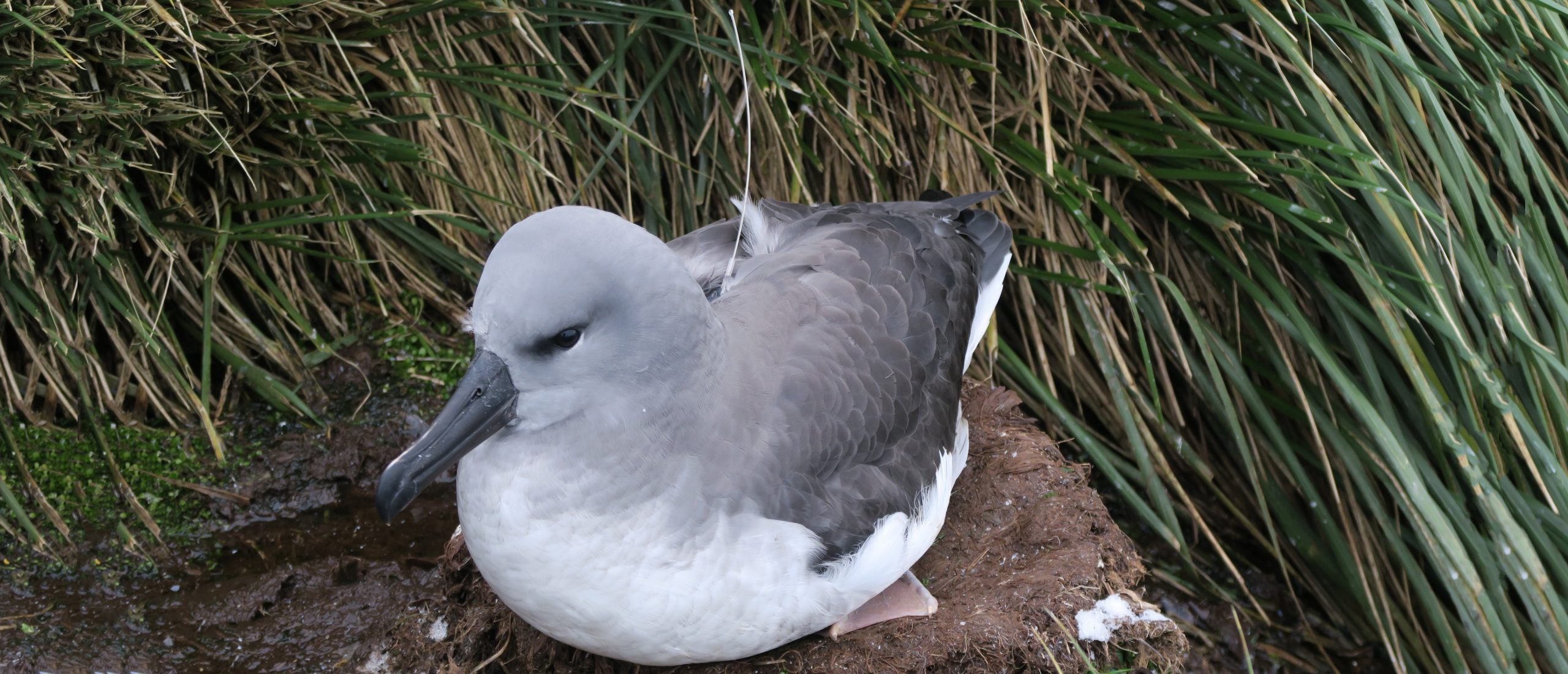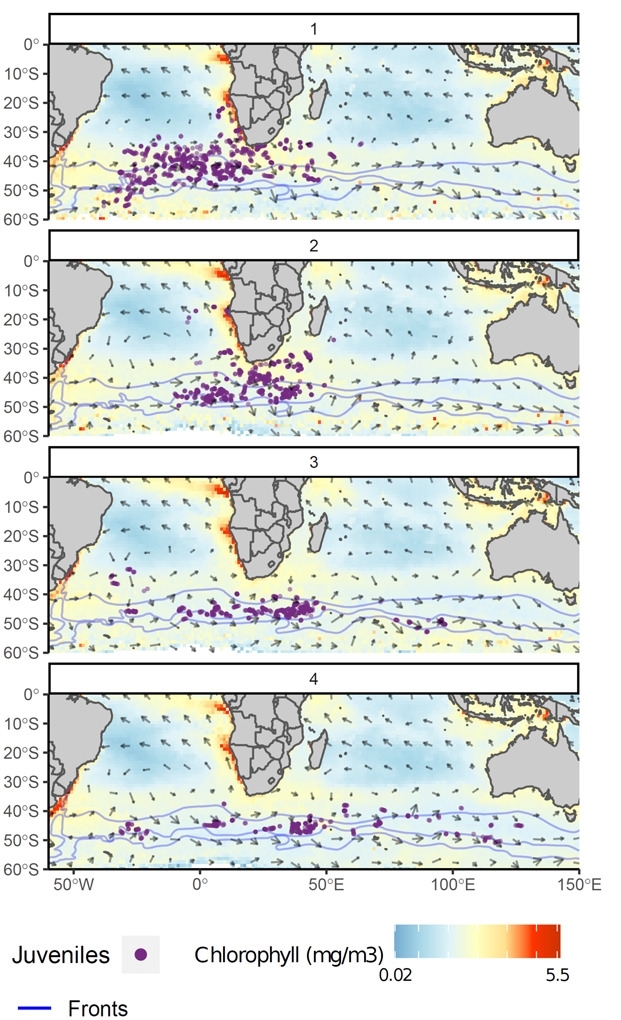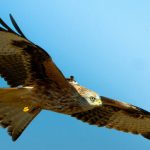← Back
Juvenile grey-headed albatrosses learn to decode their environment

Uncovering how young animals learn to move efficiently and find food, is one of the many possible uses of satellite telemetry. Here, researchers from British Antarctic Survey satellite-tracked juvenile grey-headed albatrosses to understand the effect of environmental conditions during this critical early stage of development.
Photo: a juvenile grey-headed albatross close to fledging with an Argos PTT (Credit Mark Whiffin)
Juvenile albatrosses, such as grey-headed albatrosses (Thalassarche chrysostoma), are abandoned by their parents at their nests. After fledging, they go through a tough learning period at sea during which they must master how to move efficiently and to find food on their own.
Satellite telemetry can help reveal how these young birds behave during this vulnerable period. The British Antarctic Survey tracked juvenile grey-headed albatrosses (Tracking of juvenile grey-headed albatrosses ) from Bird Island, South Georgia, during two different years (9 individuals in 2018 and 12 in 2019), using Argos satellite transmitters to unravel how naïve animals develop specific movement and feeding strategies.
Indicators of changes in movements
The researchers quantified the movements of the juveniles, with a focus on characterizing how step lengths and turning angles (the distance and change in travel direction between consecutive locations, respectively) changed over their first four months at sea. They also investigated how these movements changed in response to environmental conditions, including: first, tailwind support, which enables low-cost movement and thus indicates whether young birds are efficient in their use of wind to fly, and second, chlorophyll-A concentration which is a proxy for prey resources.
More info about animal tracking with Argos

Locations (violet dots) of juvenile grey-headed albatrosses tracked from Bird Island (South Georgia) in 2018 and 2019 (total 21 individuals) during their first four months at sea (1, 2, 3, 4) in relation to chlorophyll a concentration (colour bar), wind vectors (arrows) and the Subtropical, Subantarctic and Antarctic Polar fronts from top to bottom (dark blue lines). (from [Franckish et al., 2022])
Changes in behaviours
Changes in behaviour were apparent after the first month at sea, by which time the birds had reached the southeast Atlantic Ocean. During this first month, all the juvenile grey-headed-albatrosses used tailwinds to move at high speed and in the same general direction, suggesting they use an inherited compass which increases the likelihood of finding a suitable foraging area shortly after fledging. After 2-4 months they left the southeast Atlantic region, possibly related to food availability, reducing their travel speed but increasing the sinuosity of their paths – much as adults do when foraging – and settled in frontal regions.
More tracking needed
Using satellite telemetry, this research showed that movements of juvenile grey-headed albatrosses were shaped by a combination of winds and food availability, and that strategies switched from fast and directed flight to the first, productive feeding area, to slower, more explorative movements at frontal zones. It is likely that these young birds may refine optimal migration or foraging strategies during this period, but more satellite tracking is needed to find out!
Reference & link
- Caitlin K. Frankish, Andrea Manica, Thomas A. Clay, Andrew G. Wood, Richard A. Phillips, 2022: Ontogeny of movement patterns and habitat selection in juvenile albatrosses. Oikos, Volume 2022, Issue6, e09057, https://doi.org/10.1111/oik.09057
- https://www.bas.ac.uk/project/grey-headed-albatross-juvenile-tracking/

